
|
home > NEWS > The Entrepreneurial Museum of Challenge and Innovation – Tracing the Significant Achievements of 105 Business Leaders Including Kōnosuke Matsushita
The Entrepreneurial Museum of Challenge and Innovation – Tracing the Significant Achievements of 105 Business Leaders Including Kōnosuke Matsushita
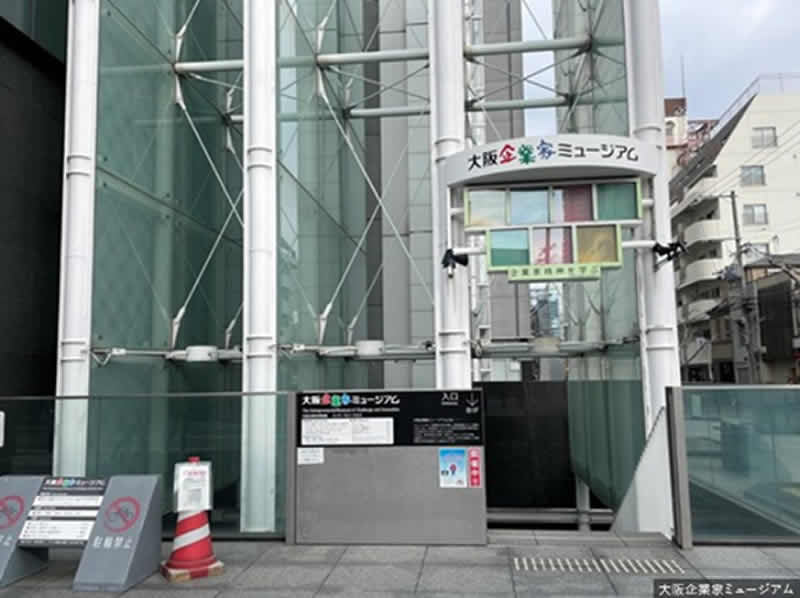 The Entrepreneurial Museum of Challenge and Innovation
Osaka Wonderland – No.38 Since the Meiji Restoration, Japan has developed through innovation and ingenuity while adopting western technologies, and has grown into an economic major power on par with Western countries. This was driven by entrepreneurs, and Osaka has produced many of them. But did you know that there is a unique museum in Semba, Osaka's business district, focusing on these entrepreneurs, their challenging spirit and ambition? The Entrepreneurial Museum of Challenge and Innovation is located on the basement floor of the Business Innovation Center Osaka in Honmachi 1-chome, Chuo Ward, Osaka City, along the Higashi-Yokobori River. This is the site of the former Higashi ward office. Higashi Ward is mostly made up of the Semba area, which was once the economic center of Osaka, and the ward was regarded as a high-status area among the wards in Osaka City. Osaka's Chuo Ward was formed in 1989 by the merger of Higashi and Minami Wards, and it is quite impressive to find that the Entrepreneurial Museum of Challenge and Innovation is located on the former site of Higashi Ward Office, which had jurisdiction over the old business district. Although its exterior is unremarkable, the museum is definitely worth visiting when you come to Osaka, in fact it is one of the places you have to go to. Explore the ideas of the great entrepreneurs who shaped Osaka's economy. The Entrepreneurial Museum of Challenge and Innovation was established in June of 2001. The objective of this museum is to convey how Osaka's entrepreneurs and their entrepreneurial spirit played an important role as a driving force for social and economic development. There are many museums created by various companies to honor the achievements of their founders, but museums themed on the thoughts and philosophies of multiple entrepreneurs are very rare even on a global scale. This also seems to highlight the uniqueness of the city of Osaka. The museum also fosters the next generation of entrepreneurs through seminars and courses, and conducts research (Entrepreneurship Research Forum). Its activities are based on three pillars: exhibitions, human resource development, and research. The majority of visitors are businesspeople, with 70% working adults and 30% students. Many visitors also come for corporate training for new employees or those being transferred to Osaka, university seminars and career education, and field trips for junior high and senior high school students. Foreign visitors make up 20% of the total, and roughly half of them are from Chinese-speaking countries. Kōnosuke Matsushita is particularly popular, and many visitors leave feeling deeply moved. The total number of visitors to date is over 370,000.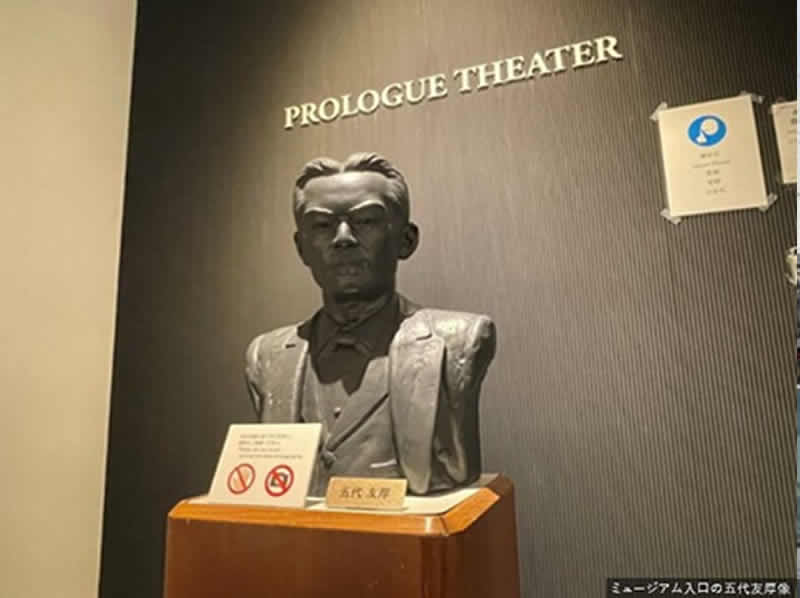 Bust of Tomoatsu Godai at the museum entrance
The statue of Tomoatsu Godai welcomes you At the entrance to the museum, there is a bust of Tomoatsu Godai, known as the father of modern Osaka economy. "Godai-sama boom" has exploded after actor Dean Fujioka played the role of Godai in the NHK morning drama series "Asa ga Kita" (Here Comes Asa!) broadcast in 2015. There are five other bronze statues of Tomoatsu Godai in the city of Osaka: Osaka Exchange, Osaka Chamber of Commerce and Industry, Kosei Securities, Osaka Prefectural Osaka Business Frontier Senior High School, and Osaka Metropolitan University. Godai is extremely popular in Osaka.In the Prologue Theater just inside the museum, a 15-minute video is shown at 15 minutes past the hour, explaining the roots of Osaka's entrepreneurial spirit and the nature of the city that nurtured entrepreneurs, going back from the time of Toyotomi Hideyoshi to the Edo period. The video is short but densely informative and easy to understand, so it is highly recommended to watch it. Wide range of entrepreneurs born in Osaka 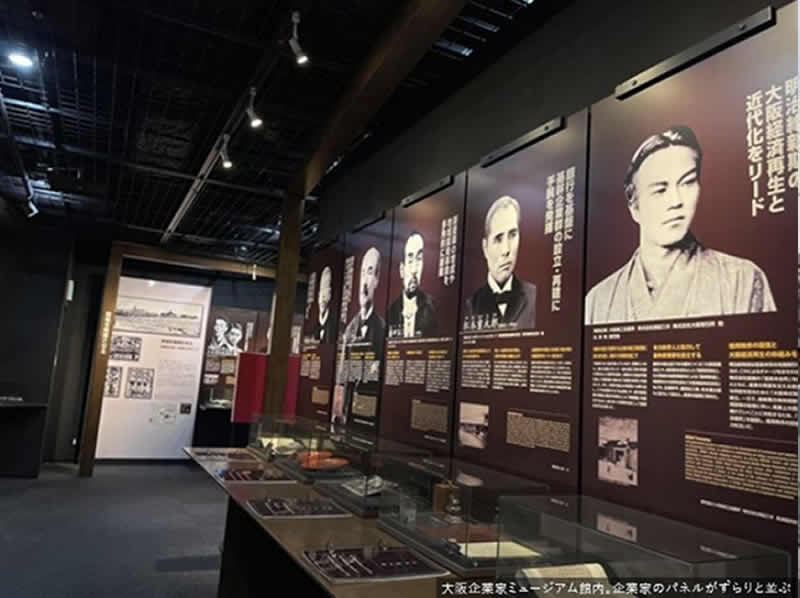 Inside the Entrepreneurial Museum of Challenge and Innovation. Panels of entrepreneurs lined up
The success of the Expo led to a boom in the construction of large domes in the U.S. and the birth of the Tokyo Dome and Kansai International Airport in Japan. Founder Ryotaro Nohmura's visionary spirit and tireless efforts in technological development led to the blooming of tents all over the world. The first block is "Birth of Osaka as a Modern Industrial City – Construction of Industrial Foundation". The exhibition lists the people who built Japan's industrial foundations since the Meiji Restoration.There are entrepreneurs who founded and greatly expanded their companies: these include Toyobo, Unitika, Kanebo (now Kracie), Kurabo/Kuraray and others in the textile industry; Itochu, Marubeni, and Sojitz and others in the trading sector; Nomura Holdings, Daiwa Securities, Nippon Life Insurance, Resona Bank, Sumitomo Mitsubishi Banking Corporation, Mitsubishi UFJ Bank and others in the financial sector.The second block is "Formation of Mass Society – Beginning of Consumer Society From the end of the Meiji era to the Taisho and early Showa periods, Western-style modernization advanced in Japan, and key industries developed such as architecture, civil engineering, railway development, and heavy industry. At the same time, a mass consumption society arrived, and many Western-style consumer goods and foods appeared, and leisure, shopping, newspapers, and other cultural industries also flourished. The second block covers the "Greater Osaka" era when Osaka City overtook Tokyo City and became the largest city in Japan in terms of both area and population.This block features the companies include Obayashi Corporation and Takenaka Corporation in the civil engineering and construction industries; the five private railway companies in the Kansai region (Hankyu, Hanshin, Keihan, Nankai, and Kintetsu) in the railway sector; Kubota, Yanmar, Tsubakimoto Chain, Hitachi Zosen (now Kanadevia) and others in the heavy industry. Pharmaceutical manufacturers such as Takeda Pharmaceutical, Mitsubishi Tanabe Pharma, Shionogi, and Astellas Pharma, which have their roots in the drug wholesalers in Doshomachi, Osaka, promoted the modernization of the pharmaceutical and chemical industries. Companies such as Akadama Port Wine (Suntory), Craypas (Sakura Color Products), thermos bottles (Zojirushi), Glico caramel (Ezaki Glico), cameras (Konica Minolta), curry rice (House Foods), sports equipments (Mizuno), stationary (Kokuyo), cash record teller machines (Itoki), and bicycles (Shimano) were all developed by entrepreneurs in Osaka. Entertainment businesses such as Yoshimoto Kogyo and Shochiku, department stores such as Daimaru and Takashimaya, and major newspapers such as Asahi, Mainichi, and Sankei also originated in Osaka. The third block is "Creating an Affluent Age – From Reconstruction to Prosperity." From this section onward, visitors begin to immediately recall the names of entrepreneurs from the names of companies: the master of management, Kōnosuke Matsushita of Panasonic, Toshio Iue of Sanyo Electric, Tokuji Hayakawa of Sharp, Isao Nakauchi of Daiei, Momofuku Ando of Nissin Foods, as well as Daiwa House, Sekisui House, Daikin air conditioning, Nippon Ham.Other exhibits include two-pronged sockets from the era of Matsushita Electric Housewares Manufacturing Works, Japan's first jet-type washing machine made by Sanyo Electric, and the world's first electronic desktop calculator using all-transistor diodes made by Sharp, and the museum is packed with valuable actual items that shed light on the history of modern Japanese industry. The "Kansai Entrepreneur Video Library" contains recorded interviews with 26 entrepreneurs, featuring rare video footage conveying their voices including Momofuku Ando (Nissin Foods), Satoshi Iue (Sanyo Electric), Kazuo Inamori (Kyocera), and Isao Nakauchi (Daiei). The list above is only a portion of the entrepreneurs on display, and there are many other prominent companies that represent (and represented) Japan. Visitors would wonder again, "Was Osaka really this amazing!?" The inception of the museum Osaka was known as the "Kitchen of the Nation" during the Edo period and was the economic center of Japan. Although the city was burned down in air raids during World War II, many commercial relics remain such as noren shop curtains from long-established companiesThe idea of a "commercial museum" to collect, preserve and exhibit all the old documents and tools owned by these companies and businesses was first raised in the Osaka Chamber of Commerce and Industry in the early 1990s. However, Japan's economic bubble burst when the Edo-Tokyo Museum was opened in 1993, it would be too difficult to construct a large, expensive building in Osaka, as was the case in Tokyo. Then the museum was reoriented to focus more on human aspects rather than materials, spotlight on the way people lived, and on the actions and spirit of many entrepreneurs Osaka has produced. The director of the museum, Mr Matao Miyamoto, Professor Emeritus of Osaka University and Doctor of Economics, explained: "Osaka has grown and developed as an economic center since ancient times, and has produced many great entrepreneurs. But what kind of people were these entrepreneurs? What kind of aspirations did they have to overcome the challenges of the times? We felt that introducing their spirit of challenge and innovation, along with the historical background of the times, could be a contribution to the future of Osaka. Then we decided to create a museum that conveys the state of mind that the word 'entrepreneurial spirit' actually means." 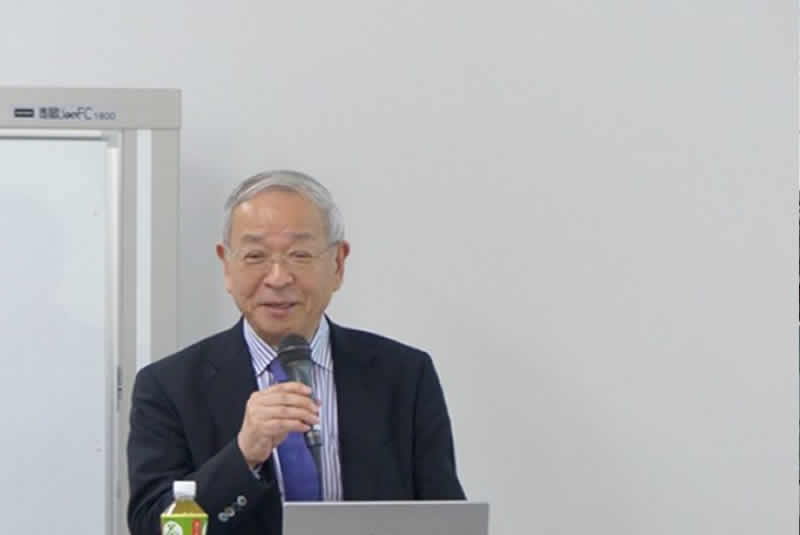 The Director of the Entrepreneurial Museum of Challenge and Innovation, Mr Matao Miyamoto said, "I would like visitors to learn about lesser known entrepreneurs who left a great mark, such as Kiyochika Iwashita, who was Kobayashi Ichizo's boss and mentor during his time at Mitsui Bank, and Takeo Yamanobe, who was the catalyst for Osaka becoming known as the 'Manchester of the East'."
Four reasons why Osaka has produced many entrepreneurs When deciding which entrepreneurs to exhibit at the Entrepreneurial Museum of Challenge and Innovation, they first selected around 300 candidates, then narrowed this list down to 105. It was a difficult task to select entrepreneurs with a good balance of industries while taking into account the times. They even received some complaints saying "It's outrageous that the president of our company isn't included."Still, why has Osaka produced so many entrepreneurs? "First of all, I would like to point out the freedom and openness of Osaka. The defining character of Osaka is its welcoming nature for everyone. Osaka was called the "Kitchen of the Nation", and the "nation" means it does not belong to any particular feudal domain. It was a cosmopolitan city. Among the 105 entrepreneurs currently on display, only 20 were born in Osaka. Even if you include the Kyoto and Kobe areas, there are only 40. The rest are mostly from western Japan or the regions along the Sea of Japan that were connected by the Kitamae-bune trading ships. Nowadays, there is a feeling that "if you go to Tokyo, you will be fine", but in the past it was more like "if you go to Osaka, you will be fine". The second is industrial clustering. Osaka has a long history as a city of commerce, and various industries have developed there, with many people living there involved in those jobs. Ventures cannot be launched by one person alone, and they will not succeed without cooperation from people around them. Without support from various people as well as related industries and technologies, a business will not develop. The third is personal networks. This overlaps with the second point, but the key is everyone helping each other out. Senior entrepreneurs taught and helped their juniors. One famous example is Mr. Iue of Sanyo Electric meeting for meals and talking with younger entrepreneurs, providing them the opportunities to learn about business management (The Iue School). There was also a network of entrepreneurs helping each other, such as providing investment capital for new businesses. And the fourth, Osaka once had a comprehensive appeal as a city. At the end of the Edo period a British diplomat who came to Japan described Edo as London, Kyoto as Rome, and Osaka as Paris. That means how cultural, artistic, and beautiful Osaka was at the time. It must have been a city people aspired to visit." explained Director Miyamoto. The Game Change in Meiji Restoration After the Meiji Restoration Osaka, once the economic and cultural center of Japan, went into decline for a time. The biggest reason for this was the change in the financial system.During the Edo period, each feudal domain collected rice from farmers as annual tax. This rice was sold at the Dojima Rice Market in Osaka and converted into money. As a result, Osaka had a large number of money exchange businesses, or what we now call banks, and money exchangers ranked at the top of rich lists. Money exchangers had great influence, lending money to feudal lords around the country, known as "daimyo lenders". The Hirooka family of the Kajimaya money exchangers, which later became Daido Life Insurance, was so powerful to raise funds for the Shogunate, known as Goyōkin, and to be consulted by the Shogunate on rice price measures. Although the Meiji government promised to take over the debts that wealthy Osaka merchants had lent to daimyo feudal lords and the Shogunate, only about one third of these debts were repaid. This resulted in the bankruptcy of around 50 money changing businesses in Osaka, causing disruption and decline in the Osaka economy. Then Tomoatsu Godai resigned from the government office and came to Osaka to rebuild the city. No wonder the people were delighted. In 1878, when Eiichi Shibusawa founded the Tokyo Chamber of Commerce (present-day the Tokyo Chamber of Commerce and Industry) in Tokyo, Tomoatsu Godai established the Osaka Chamber of Commerce (present-day the Osaka Chamber of Commerce and Industry) in Osaka. He supported and encouraged Osaka merchants to adapt their businesses in changes of the new Meiji period. That is why many companies, including banks and life insurance companies, were founded in Osaka. The historical events are connected. The key to revitalizing Osaka Osaka has produced many entrepreneurs during the Meiji, Taisho and Showa periods from the 1870s to 1990s. It is surprising to learn that many of the companies they founded are still producing products and services that are essential to our lives today.However, after Japan's economic bubble burst at the end of the 1980s, Kansai companies began to relocate their headquarters to Tokyo in search of connections with the government departments in Kasumigaseki and the political world. This led to further concentration and centralization in Tokyo. For a city that produced so many companies and entrepreneurs, the current situation is very sad. I asked director Miyamoto how Osaka could regain its former glory. "It may seem paradoxical, but I don't think we promote Osaka just as a city of commerce and the economy. When Osaka was developing, the city was much more open and diverse. More than half of the entrepreneurs featured in this museum are originally from outside the Kyoto, Osaka and Kobe areas, but they naturally became 'Osakan' when they came to Osaka. People from all over the world become Parisians if they live in Paris, or New Yorkers if they live in New York. We would like Osaka to be a melting pot of people, an open city, more fashionable, with a hint of culture and art, a city that women aspire to live in. In that sense, I think education and culture will be important elements in Osaka's revitalization." Personally, as I carry out research for this series, I am constantly reminded by the depth and richness of Osaka's history and culture. Around 2000 B.C. during the middle Jōmon period, people already lived in the area that is now Morinomiya, and the Naniwa Palace was constructed before the cities of Nara and Kyoto became capitals. And up until today, Osaka has more layered history as a city than any other city in Japan. There is no other city really like Osaka. 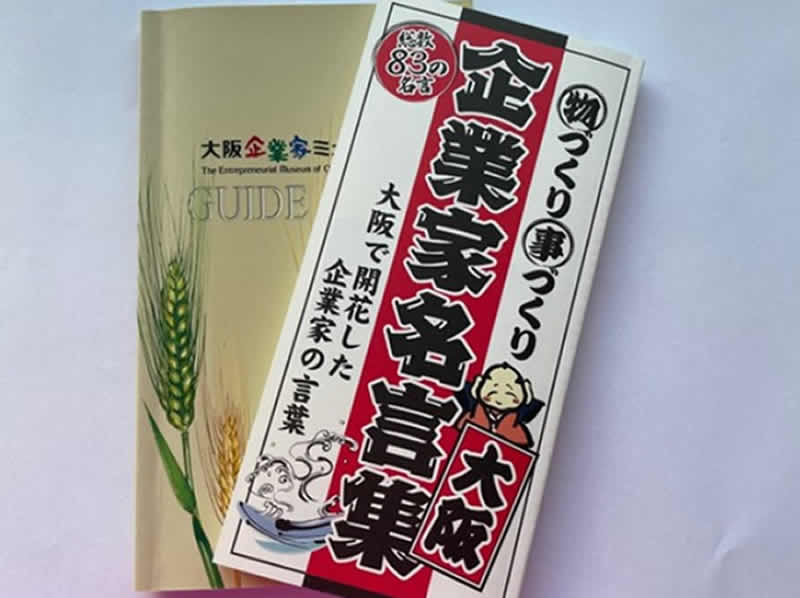 A collection of quotes from entrepreneurs published by the Entrepreneurial Museum of Challenge and Innovation. A book gives us courage through the words of famous entrepreneurs.
|
